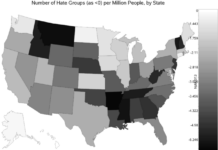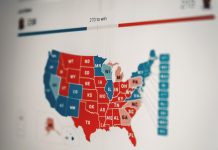The 2016 Presidential election has faced many criticisms, but the major theme of the primaries so far has been “anti-establishment.” Some candidates have done everything they can to distance themselves from having any kind of relevant political experience, even though getting on the ballot requires a certain amount of establishment cred. But what if it didn’t? What if there was a way for 3rd, 4th, or even 5th party candidates to run a real campaign, receive real support from their followers, and not have a negative impact on other like-minded candidates? Enter Instant Runoff Voting (IRV).
Bernie Sanders has run and won as an Independent for years in the U.S. Congress. He was able to pose a real challenge in the Democratic primary by grabbing hold of a liberal demographic of voters that feel the parties no longer represent their interests. Republican front-runner Donald Trump has zero political experience, and from a political standpoint, that might be his most appealing quality.
If the parties don’t want them, why don’t these outside candidates just run as Independents, just as Bernie has done and Trump has threatened to do? The problem for a 3rd-party candidate is that they immediately weaken the chances of the candidate with which they are more like-minded.
We go to the polls every four years and hear the same thing: pick the lesser of two evils. But why should people have to sell their values just to prevent someone even worse from winning? The answer is that they shouldn’t…if we were doing elections a better way.
IRV can actually go by several names: alternative voting, preferential voting, or ranked choice voting, among others. The very basic premise is that, rather than choosing a single candidate on the ballot, the voter instead ranks the candidates by preference. In most cases this involves ranking all of the candidates, not just selecting a few. This allows voters to choose their preferred candidate with their first-choice vote, while giving a runner-up nod to the lesser of any remaining evils.

Imagine an election where you go into the booth with four choices: Hillary Clinton (D), Bernie Sanders (I), Donald Trump (I), and Ted Cruz (R). The conventional wisdom says that Clinton and Cruz, as the party establishment candidates, are the only two with a real chance and the others are only diluting their chances. But with IRV, the voter would rank these four as opposed to choosing only one.
Let’s say a Bernie Sanders supporter votes in this very realistic order: Sanders, Clinton, Cruz, Trump. At the end of the election, it is calculated that Clinton received 35% of the first-choice votes, followed by Cruz with 25%, Sanders with 22%, and Trump with 18%. The first check is to see if anyone won a clear majority, which would make them the winner right away. As Clinton received the most first-choice votes with 35%, there is no clear majority, so we tally on to round two.
This time, the candidate receiving the least amount of first-choice votes is dropped, and each of the other candidates move up one rank on their ballot. Trump goes to the curb (finally!). Of the original Trump voters, 16% had Cruz as their second choice (now their first choice), and Sanders and Clinton each get 1%. Now the totals are Cruz with 41%, Clinton with 36%, and Sanders with 23%. Still no clear majority, so we glide and stride to round three.
Sanders is the next candidate with the least amount of first choice votes, so he is dropped and his ballots now have the remaining two candidates moving up a spot. Note that some ballots are now on their third choice. As Sanders voters are more likely to have Clinton as their next choice, it would make sense that most would go to her. Of the 23% Sanders now holds, 20% now goes to Clinton and 3% to Trump. This leads to Clinton with 56% and Cruz with 44%, and finally we have a clear majority and a winner.
While this might seem somewhat complicated, notice that it allows each voter to choose their actual favored candidate without damaging the like-minded candidate.
In 1992, billionaire Ross Perot ran as an Independent against incumbent Republican George H.W. Bush and Democrat Bill Clinton. Clinton won, of course, but not with a majority of the vote. He received 43%, Bush received 37%, and Perot grabbed a staggering 19%. As Perot ran on more conservative principles, it is generally understood that his candidacy was far more damaging to the elder Bush and was possibly the difference between Republican win or loss.
Imagining such an election under IRV would have allowed for Perot to run his campaign without having to fight Bush for voters. With IRV, Perot’s 19% would be distributed to the next choice, likely leaning more towards Bush. Ignoring the Electoral College for a second, Bush would have only needed a 13-6% split to have a 50-49% popular vote advantage.
For liberals saying to themselves, “Well, thank God we got Clinton over Bush,” consider the 2000 election. Green Party candidate Ralph Nader only received 1.6% of the Florida vote, but even if just 1% had gone towards the more like-minded Al Gore, it would have been more than enough to give Florida, and thus the entire election, to Gore.
It would appear that IRV is a far superior voting method than the bizarre system we use now. Some even think IRV doesn’t go far enough, advocating for a similar process called “ranged” or “scored” voting, where voters literally give each candidate an approval score, and those numbers are averaged. The question is…if these systems are out there, why aren’t we doing this for all elections right now?
Two reasons. Number one–it seems hard, and we don’t like to do things that seem hard. Number two–it would cost more money for equipment and poll worker training, and anything that costs more money is obviously evil.
But are those really valid excuses? Other countries are already doing this, and it works well for them. Hanging chads aside, the general electorate is far more capable than we give them credit for. And as much as we worry about money, elections are a cornerstone of our democracy. If we’re going to put money towards anything, running fair and free elections should be at the top of the priority list.
Come on, people, let’s Don Quixote this thing and start voting for the representation we truly want!
Featured image by Richard Schatzberger via Flickr, available under Creative Commons 2.0





